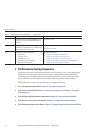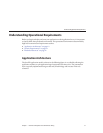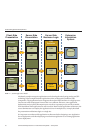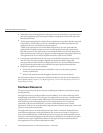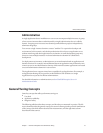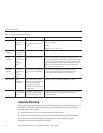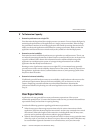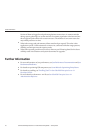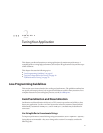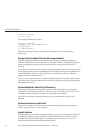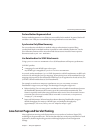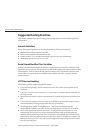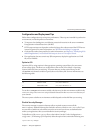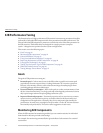
fraction of them are logged in and performing business transactions. A common mistake
during capacity planning is to use the total size of customer population as the basis and not
the average and peak numbers for concurrent users. The number of concurrent users also
may exhibit patterns over time.
■
What is the average and peak amount of data transferred per request? This value is also
application-specic. Good estimates for content size, combined with other usage patterns,
will help you anticipate network capacity needs.
■
What is the expected growth in user load over the next year? Planning ahead for the future
will help avoid crisis situations and system downtimes for upgrades.
Further Information
■
For more information on Java performance, see Java Performance Documentation and Java
Performance BluePrints
.
■
For details on optimizing EJB components, see Seven Rules for Optimizing Entity Beans
■
For details on proling, see “Proling Tools” in Sun GlassFish Enterprise Server 2.1
Developer’s Guide
■
For more details on the domain.xml le see Sun GlassFish Enterprise Server 2.1
Administration Reference.
FurtherInformation
SunGlassFishEnterpriseServer2.1PerformanceTuningGuide • January200926



